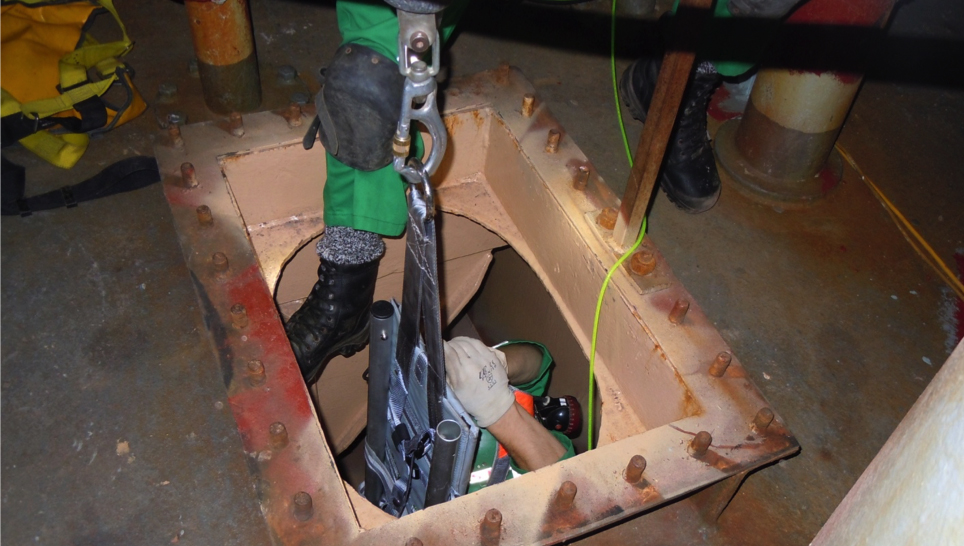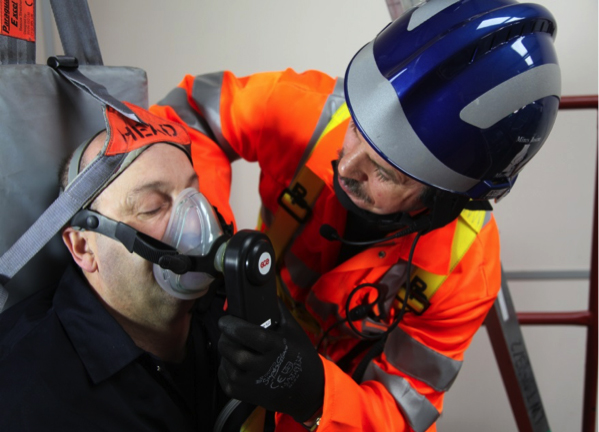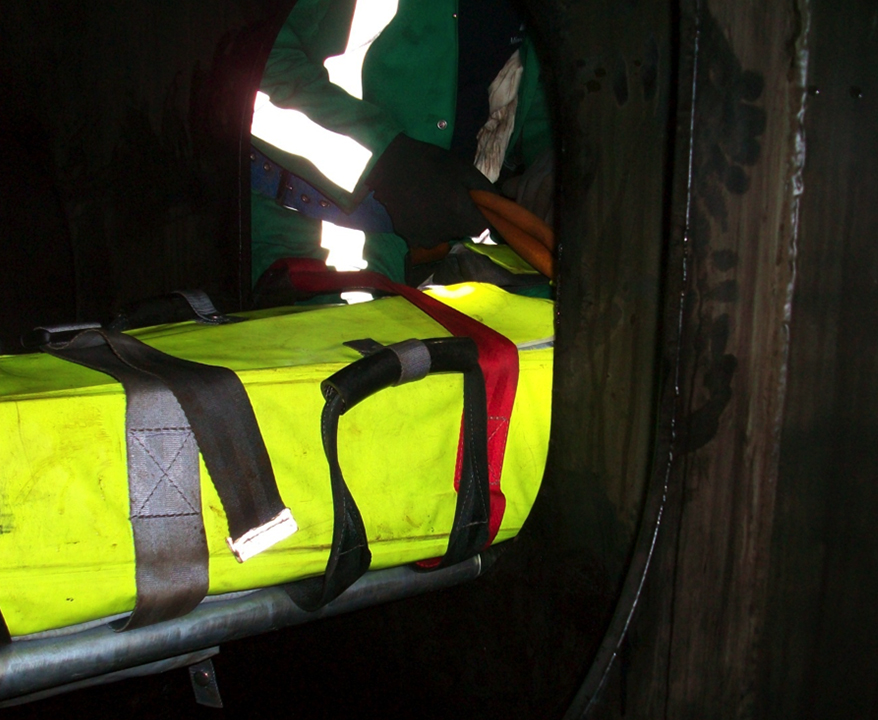
Nautilus Council member Captain Michael Lloyd looks back at the progress made since he started his enclosed spaces safety campaign in 2009, and draws some dispiriting conclusions
Ten years ago, owing to the increasing accidents and deaths in enclosed spaces onboard ships, I began a campaign to draw attention to this problem and try to solve it.
I enlisted the support of the Mines Rescue Organisation, now privatised as MRS Training and Rescue, who joined with me in this venture and applied their extensive enclosed space knowledge gained in the mining industry.
With a decade now having elapsed since the start of the campaign, I thought it would be useful to see just what has been achieved in this time.
Legislation
All marine legislation is in the hands of the Safety Committee of the International Maritime Organization (IMO). Regrettably, the appointment of delegates to this committee is decided by the flag states, which in many cases are controlled by the ship owners whose vessels are registered with them – notably Panama and The Bahamas. This can mean that delegates favour what the shipowners want, even having the ability to appoint shipowners’ employees as their delegates.
This could explain why, regardless of the continuing deaths of crew members and shore workers who come onboard, only two pieces of legislation have been passed in 10 years.
The first of these legal requirements states that enclosed space drills are to be held onboard every two months. A drill is held to ensure that the training for a certain emergency is satisfactory for that time and place and all in the team know their required function. However, there is no requirement for crew members to have had the proper training in the first place. Onboard training is not sufficient, as how can those who have never had training themselves train others? Training in enclosed space entry and rescue is required just as much as firefighting training.

The second requirement is to have oxygen/ gas detectors onboard.
This was very belated legislation and much needed. Unfortunately, the IMO set the required oxygen level standard at 21%. As normal air is considered to be 20.8% oxygen, this could lead to the alarm going off whenever the detector is switched on, leading to the eventual ignoring of the alarm.
The basis for safe entry into an enclosed space is the presence of safe and breathable air. These are not the same. Safe air is generally set at 20.8% oxygen; however, breathable air has a far lower percentage, and it is considered to be acceptable to enter spaces with 19.5% oxygen – with an example of one major industrial country allowing 18%.
The aim of the oxygen meter is to determine the level of oxygen in the air and to indicate any variation in that content as various spaces are entered. It would be convenient to say that if there is any reading below 20.8 then the space should not be entered, but as the oxygen content in the air outside a space can vary, this has to be taken into account. For example, a ship alongside in summer in a heavily industrialised city could have an open-air reading of far less than 20.8% before entry. The meter must therefore be used as an indication of deterioration of oxygen content rather than a go- or no-go indicator. Should it indicate that any space has a lower content of oxygen than that existing outside, then, regardless of how small, the cause of this difference must be determined and the safety of the space verified before entering.
Training
As previously stated, no enclosed space entry or rescue training is required under international maritime legislation. Mines Rescue joined with Videotel to produce seven DVDs dealing with enclosed space entry and rescue in an effort to provide at least a basic training guide until the IMO legislated for an essential formal training course. We are still waiting.
Equipment
Although readily available and required in industries ashore, there is no requirement for specialist enclosed spaces entry equipment at sea, which probably accounts for a major UK shipping company a couple of years ago having three dead in an enclosed space with the only equipment for rescue being a length of rope.

The majority of ships make do with fire-fighting equipment, notably the BA set. This is not designed to go through small manholes, and this problem has resulted in the death of a rescuer. Many ships do not even know which spaces on their ship can be entered wearing this large equipment and which cannot. This is because the advice issued by the IMO that all enclosed spaces should be audited has been ignored by most companies and ships. This audit would provide a record of best points of entry, any difficulties inside the space and whether the existing wireless communications will work.
After 10 years, we still do not have legislation for equipment, training or adequate ventilation and space design, even though all this is required by industries ashore.
Four minutes
What has to be remembered is that if there is an accident involving lack of oxygen, you have four minutes to get that casualty to oxygen before brain damage begins.
There are three rules for entry. Make sure that the space is properly ventilated – and this means adequate through ventilation or better still forced ventilation.
Second, ensure that you have a respirator. The time taken up is not in getting to the casualty, but in getting the casualty out. If you have a respirator, then the oxygen mask can be put on and the automated breathing system will ensure that oxygen is supplied to the casualties’ lungs. Regrettably, a respirator is not legislated for, so many ships do not have this. Both the space and standby team must be audited to ensure they can get to a casualty in four minutes.
Third, don’t send anyone into a space where the four-minute rule cannot be met.
What next?
We don’t know how many people are dying in our enclosed spaces as there is no requirement for investigation or reporting by the flag states, and many do not do either. As example, a few years ago five men died in an enclosed space at sea on an Indian-registered ship. Still no investigation or published report by the Indian government.

After 10 years, we still do not have legislation for equipment, training or adequate ventilation and space design, even though all this is required by industries ashore. While the companies wring their hands and issue statements how they value their seafarers, they continue to do nothing to improve the situation.
The organisations ashore, especially the P&I clubs, flood the ships with advisory booklets and posters, but never demand that the ships in their clubs provide the equipment and training.
The National Marine Authorities issue notices but do not make their own legislation for their flag ships.
While the awareness of enclosed space dangers has been increased, the reports from those countries who do report keep coming in – and It is as if 10 years has never happened, except of course for the dead and their dependants.
Nautilus response
Nautilus continues to make every effort to reduce the unacceptable number of deaths that occur in enclosed spaces on ships. In the UK, we have implemented measures through the MNTB to make it mandatory that all UK cadets attend an enclosed space entry course as part of their training programme, we have successfully resisted proposals to remove the requirement to carry rescue equipment on cross channel ferries and, we have been involved in a number of initiatives and workshops both industry specific and in the wider health and safety sphere in order to share knowledge and best practice.
Internationally, in addition to supporting initiatives at the IMO to make enclosed space entry drills and the carriage of testing equipment mandatory, we will continue to support proposals that have been placed on the agenda to make enclosed space entry training mandatory at international level.
Tags
